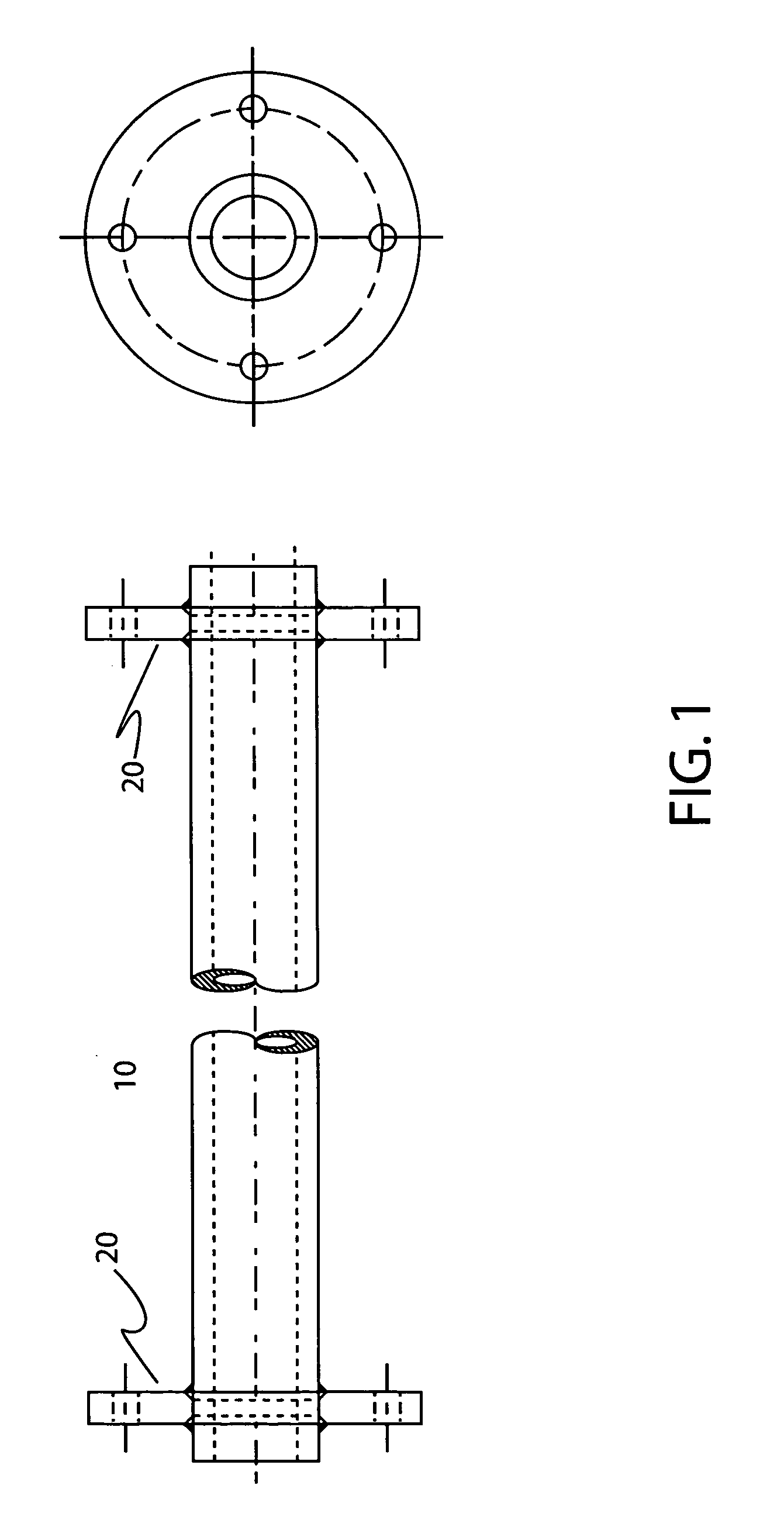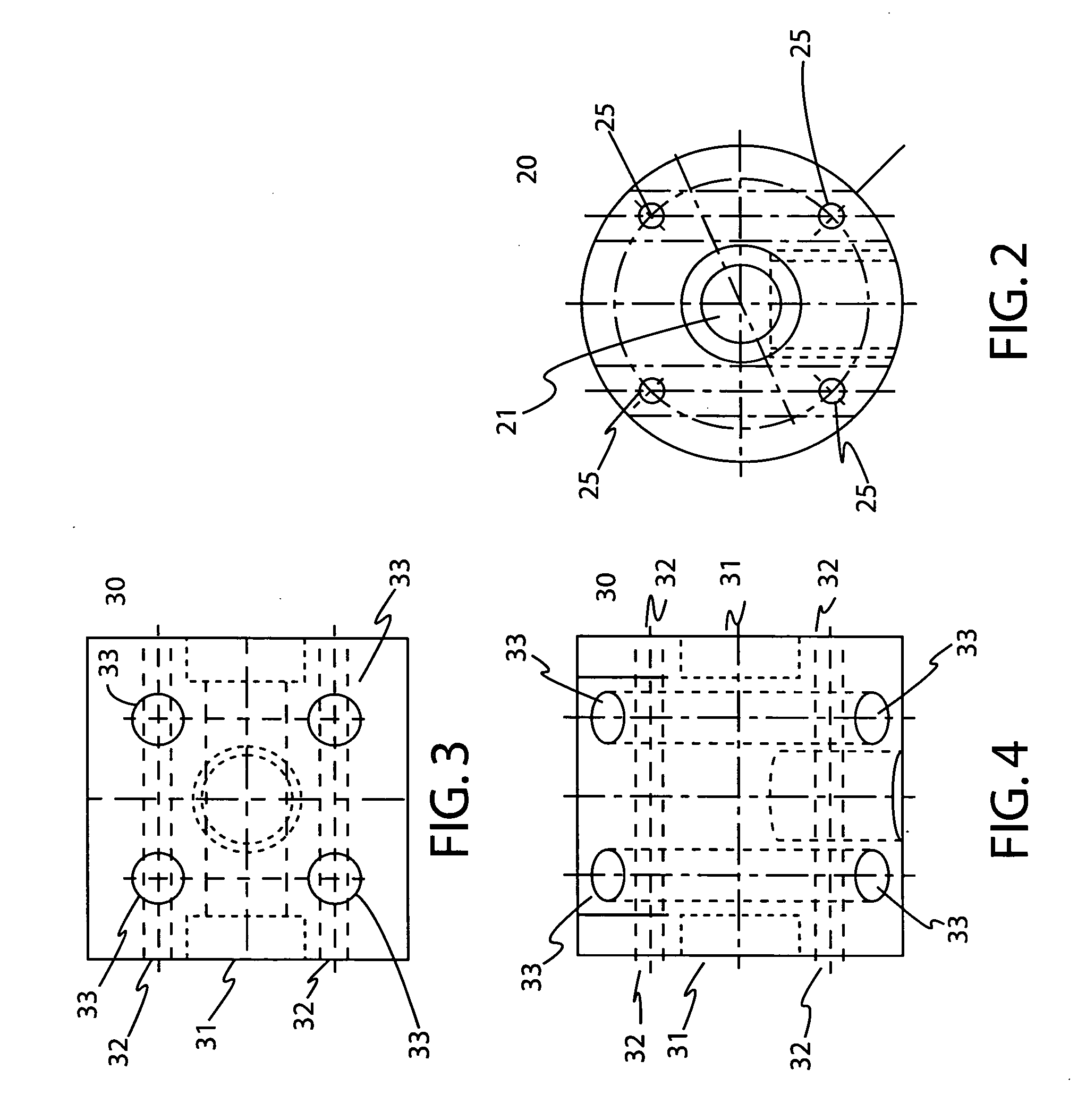Cleaning, pickling and electroplating apparatus
- Summary
- Abstract
- Description
- Claims
- Application Information
AI Technical Summary
Benefits of technology
Problems solved by technology
Method used
Image
Examples
Embodiment Construction
, particularly, when such description is taken in conjunction with the attached drawing figures and with the appended claims.
BRIEF DESCRIPTION OF THE DRAWINGS
[0018]FIG. 1 is a truncated side elevational view of a length of tube along the longitudinal axis.
[0019]FIG. 2 is a front elevational plan view of the flange.
[0020]FIG. 3 is a top plan view of the connector in the cleaning and pickling portion of the apparatus.
[0021]FIG. 4 is the front elevational plan view of the connector cleaning and pickling portion of the apparatus.
[0022]FIG. 5 is a top plan view of the connector in the electroplating portion of the apparatus.
[0023]FIG. 6 is a partly in sectional front elevational view of the connector in the electroplating portion of the apparatus.
[0024]FIG. 7 is a front plan view of the flange in the assembled apparatus.
[0025]FIG. 8 is a sectional view of the connector in the electroplating portion of the apparatus along line A-A of FIG. 7.
[0026]FIG. 9 is a top plan view of dowel.
[0027]F...
PUM
| Property | Measurement | Unit |
|---|---|---|
| Length | aaaaa | aaaaa |
| Electrical conductivity | aaaaa | aaaaa |
| Diameter | aaaaa | aaaaa |
Abstract
Description
Claims
Application Information
 Login to View More
Login to View More - R&D
- Intellectual Property
- Life Sciences
- Materials
- Tech Scout
- Unparalleled Data Quality
- Higher Quality Content
- 60% Fewer Hallucinations
Browse by: Latest US Patents, China's latest patents, Technical Efficacy Thesaurus, Application Domain, Technology Topic, Popular Technical Reports.
© 2025 PatSnap. All rights reserved.Legal|Privacy policy|Modern Slavery Act Transparency Statement|Sitemap|About US| Contact US: help@patsnap.com



